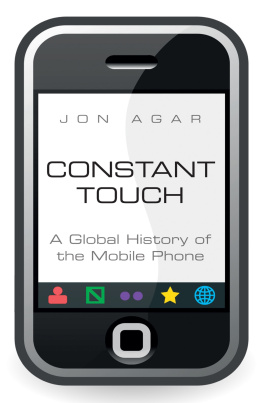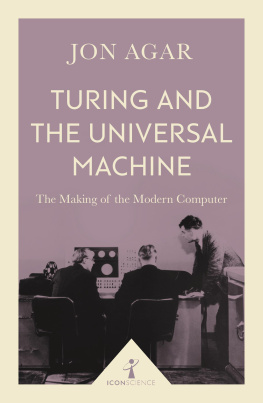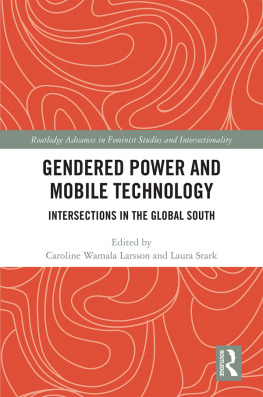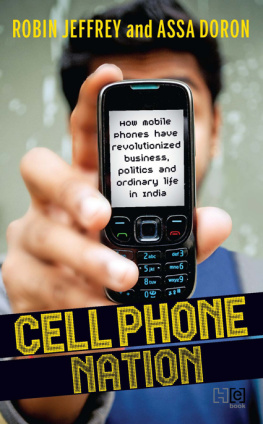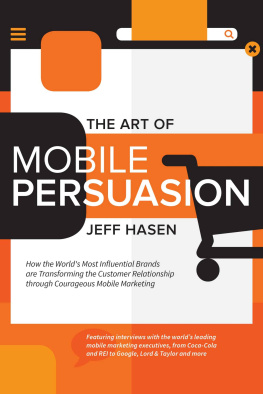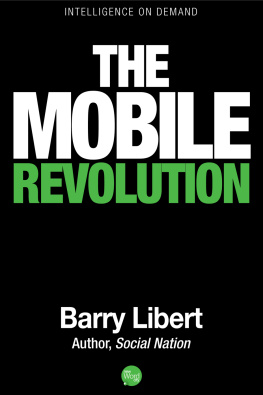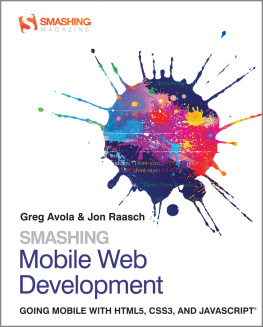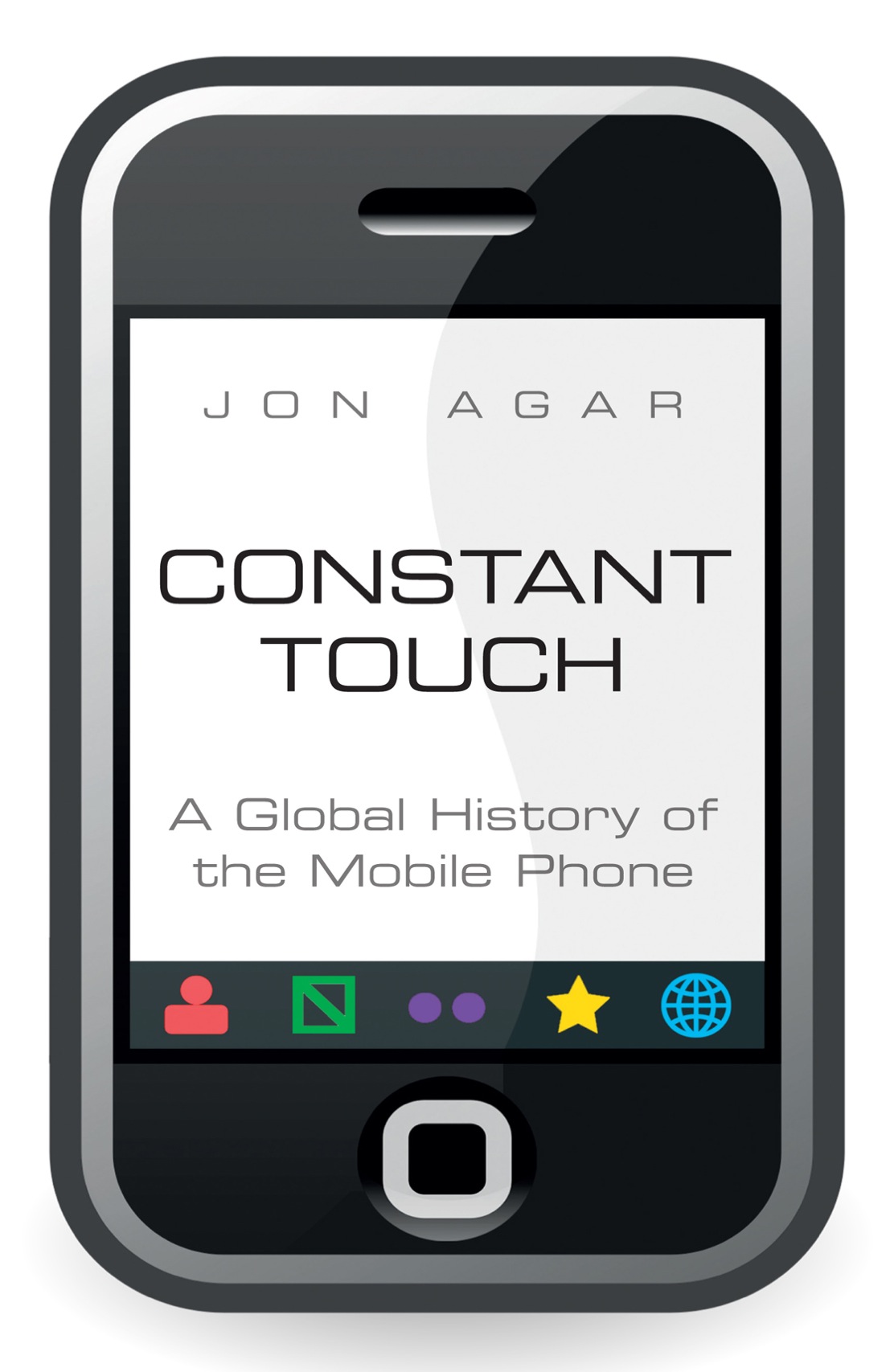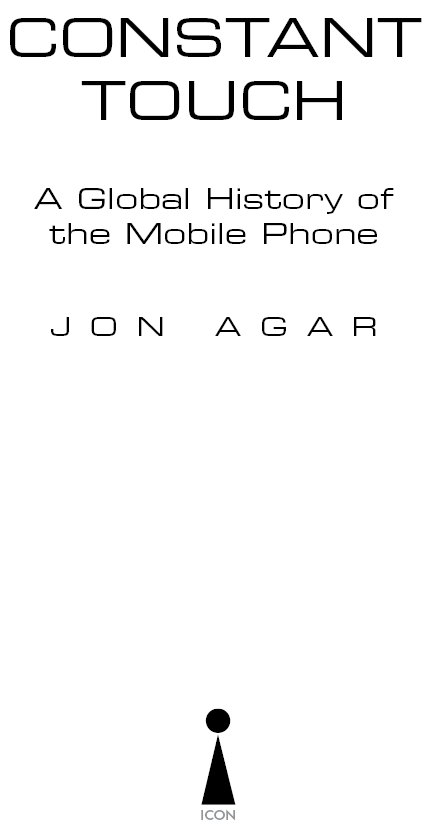For the first edition of this book, many thanks to: Cath Skinner, Jon Turney and Simon Flynn for their comments on an early draft of Constant Touch; the staff at the British Library and the City Business Library for their help in locating documents; Mark Tindley for some excellent impromptu research on health matters (and to the rest of the Thursday night football crowd for their encouragement to finish); and Brian Balmer for a good anecdote.
In preparation of this edition, my thanks to Simon Rockman (for corrections in Amazon review), to Imogen Clarke, Leucha Veneer, Jakob Whitfield and Charlotte Connelly (for kindly responding to my @jon_agar twitter plea for new movies featuring mobiles) and to Duncan Heath and Robert Sharman at Icon.
Preface
Some books start with a small observation that lodges in the memory and niggles away until the author feels compelled to stop what they are doing and devote time and thought to understanding what they have seen. Constant Touch is a case in point. In the 1990s my friends started carrying around mobile phones. I was a late adopter. By the time I got my first phone, its purchase was not so much a fashion statement or the result of any love of shiny new technology as it was a necessity: if I wanted a social life then I had better get my hands on one. My friends had long dispensed with the traditional method of arranging nights out well in advance, establishing firm details such as where and precisely when we would meet. Instead, a vague indication of plans would be finalised at the last minute, coordinated in real time through texts and quick calls. I got a phone because I did not want to be left out.
I had no idea then that this mundane tool would form the subject of a book. Instead, the observation that started me down that path was made on a visit to the United States. Im a historian of science and technology, and one of the enjoyable perks of academic life is the conference season: we meet up, we argue about interpreting the past, and swap gossip. Usually, American stories are particularly prominent in the history of modern technology. From the second half of the 19th century through the 20th century, we are used to seeing the major innovations, as well as the defining patterns of production and consumption, emerge in the United States. Think of the works of Thomas Edison, Henry Ford and Alexander Graham Bell, or even NASA or the companies of Silicon Valley. I was going to a conference in Baltimore, where I was going to talk about a minor, if fraught, episode in the Cold War when it became an urgent project to use the moon as a relay of radio signals. In my mind I was rehearsing my case study, reflecting too on how the Cold War had pushed forward certain technologies, not least in the United States. Then I noticed something unexpected. I had come from a city, London, where cellphones were everywhere in hands, on caf tables, or close by in coat pockets. Certainly it was a novel enough development that people still complained about having to overhear personal conversations in places where usually polite etiquette ruled. But even the complaints were fading. Whinging was drowned out by ring tones. But in Baltimore the sights and sounds were different. Hardly any cellphones could be seen. When they did appear the conversations if they even merited the term were in contrast too: shorter, less chatty. How odd, I thought.
This small observation led me to ponder two questions. The first was why the manner of mobile phone use seemed to vary from place to place. I soon found out that the style, to use technology historian Thomas P. Hughess terminology, of mobile phone networks as technological systems was indeed different in different countries. Furthermore, there were variations in mobile phone culture, or the meanings and expectations we find in patterns of use, that were rich and curious. The second question concerned the United States: it was strange to find a new technology in which other parts of the world seemed to be taking the lead. Was this true? And if so, why?
The first edition of Constant Touch, published in 2003, explored and offered answers to these questions. It may have started with an observation about the here and now, but I believe that the patterns of contemporary life can only be understood in historical perspectives. Some of the variations in mobile phone culture across the world are therefore best analysed as the outcome of changes over time, changes in which the social, cultural, political and technological are all intimately entwined. Even by 2003 the global number of cellphone subscribers was passing a billion. This was also part of the appeal: here was a technology that was available to many, and was sometimes marketed by multinational corporations as universal, yet was being taken up in diverse and even divergent ways. The global popularity of the mobile phone was an opportunity for studying how technologies are made sense of in the worlds societies and cultures.
I was pleased with the reception accorded to the first edition of Constant Touch. My academic peers seemed to like it. Its acute analysis and engaging prose was picked out by either the Times Literary Supplement or the London Review of Books (I forget which). Vogue called it the definitive book on the subject a stamp of approval that will shock and dismay anyone who has seen the way I dress. And the Newbury Weekly News provided a headline, Dry History Made Palatable by Entertaining Style, that still makes me smile and wish I carried business cards.
But cellphones are a fast-moving technology and by 2012 I knew, and my publishers agreed, that a new edition was needed. So much had happened, not least the transformation of the mobile phone from being primarily a tool for the communication of speech to becoming, with the smartphone especially, a richly visual, truly personal computer. However, yet again, the seed of the new book started with a commonplace observation. While the title Constant Touch had seemed apt because it caught the culture of informal and continuous contact found in cities such as Manila or London (if not yet Baltimore), now the words seemed applicable and important in a new way. I was travelling from home to work. I live in Dalston in the east of the capital and work at University College London. Catching the train at Dalston Kingsland, I realised, with a jolt, that every single fellow commuter was thumbing a smartphone. Each was fully absorbed. There was no rustling of newspapers or buzz of conversation not even the one-sided conversations of the old cellphone days that invited you, as an unwilling eavesdropper, to fill in the blanks. Here was constant touch all right, but of a different kind. And I recognised it in myself.

